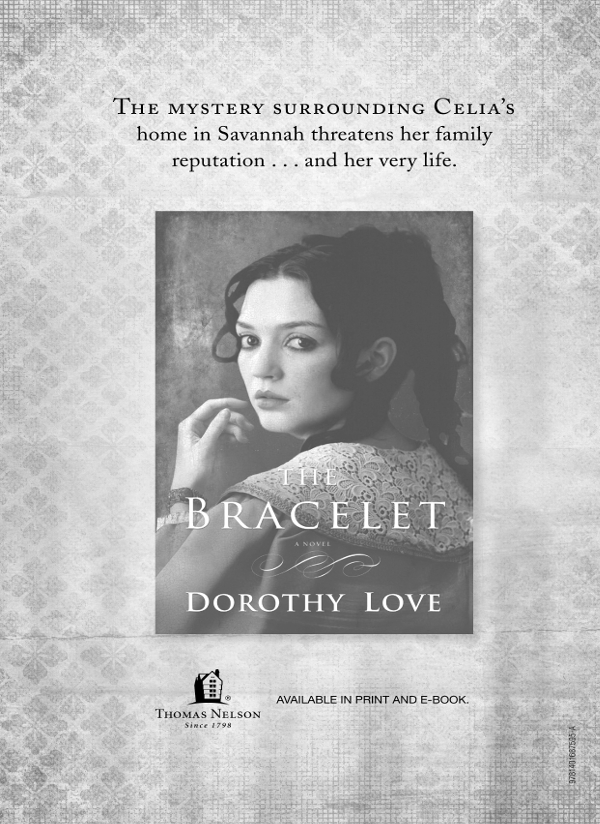Mrs. Lee and Mrs. Gray (42 page)
Read Mrs. Lee and Mrs. Gray Online
Authors: Dorothy Love

We know much less about Selina Gray. She was born a second-generation slave at Arlington around 1823 to Sally and Leonard Norris, believed to be among the favorites of the Custis family. The Norrises had at least three other childrenâWesley, Mary, and Sallie. At some point Selina was brought into Arlington house and trained as a housekeeper. Later she began looking after Mary, probably as Mary's arthritis worsened.
In 1843, Selina married Thornton Gray, another Arlington slave who is thought to have worked in the stables or carriage house. Born in 1824, he is said to have been part Indian. The Gray family lore has it that Selina and Thornton were married in the same parlor at Arlington where Mary and Robert were married. General Lee's biographer Elizabeth Brown Pryor characterizes this story as wishful thinking on the part of the Gray family, “an idealized tale of warm bonds and powerful connections” between the two families.
There is evidence that Mary and her mother sponsored the wedding of another of the Arlington slaves, providing her with a new dress and bonnet for the occasion. If it's true that the Norrises were favorites of the Custis women, it seems likely that
they would have given Selina a wedding too. And since Mary left Selinaâand not anyone elseâin charge of Arlington when she fled her home in 1861 ahead of the advancing Union Army, it seems that the “powerful connection” between the two women did in fact exist. I have chosen to accept the family's wedding story as true, for the powerful connection between Mary and Selina is the foundation upon which this story rests.
After the death of Mary's father in 1857, abolitionists targeted Arlington and often visited the slaves there to incite them to insurrection. In 1859, Selina's brother, Wesley, and sister Mary joined their cousin George Parks in an escape to Maryland. There they were apprehended and returned to Arlington, where General Lee had them punished quite severely, according to an account Wesley gave to a Northern newspaper some years after the event.
Yet when Mary left Arlington at the start of the war, Selina, who would not be freed until the following year, accepted the keys to Arlington and took charge of the Washington china, paintings, and furnishings Mary had not been able to send ahead to Robert for safekeeping. It was Selina who complained to General McDowell that his men were “stealing Miss Mary's things” and caused him to have those belongings removed to the US Patent Office. Many of “Miss Mary's things” were never recovered, but we have Selina Gray to thank for those belongings of General Washington's that were saved. Reading the account of her confrontation with the Union soldiers, I found it incredibly brave that an enslaved woman would confront a general of the United States Army with the demand that he stop his men from looting.
In December of 1862, as executor of his late father-in-law's will, General Lee freed all of the slaves at Arlington and at the
other Custis properties across Virginia. His handwritten manumission letter names all of the Norris family, plus Selina and Thornton Gray and their children, among those being freed. Selina and Thornton had more children after they were freed, and eventually bought ten acres of land near Alexandria where they grew vegetables to sell and where they lived for the rest of their lives. The cupboard and the blue-and-white pitcher Mary gave Selina upon her departure from Arlington remained in the Gray family until a restoration project at Arlington in the 1920s, when Selina's daughters returned them to the house. Selina died in 1907. Thornton Gray is thought to have died around the same time.
Because the cemetery was moved to make way for development, the current location of Selina's final resting place is unclear. However, one of her grandsons, Thornton H. Gray, who served with the US Army in World War I and died in 1943, now lies in Arlington Cemetery, just a stone's throw from the cabin where his grandmother was born a slave.
Except for the reunion scene near the end of the novel, which is based upon the 1872 letter from Selina to Mary, the scenes between Mary and Selina and between Selina and her family throughout this novel are of necessity wholly imaginary. Otherwise, I have taken care to recount events mostly as they happened. One exception is Mary's discovery of her father's paternity of one of the Arlington slaves whom he freed when Mary was around eighteen years old. It is widely accepted that George Washington Parke Custis acknowledged Maria Carter Syphax as his daughter, freed her, and gave her seventeen acres of land on the Arlington estate, where she reared ten children and lived for the rest of her life. I found no direct evidence that Mary
ever knew this about her father, thus the “discovery scene” in the novel is fiction. At his death she described him as “kind and indulgent,” and I could well imagine her feelings of disappointment and betrayal had she learned of his shortcomings.
The best clues to one's character and thoughts are those that remain in one's own handwriting. Wherever possible I have used Mary's letters and journals, letters from her family, and Robert's numerous letters to her to tell her story. Mary's writings reveal a woman who could be sharp-tongued when her family was threatened, and critical of the behavior and character of her servants, but who was tenderhearted, committed to her faith and to her husband and children, and single-minded in her support of freedom for those in bondage.
Deeply attached to Arlington, she longed for it whenever she was away and managed to return home so that six of her seven children could be born there. After the war she saw Arlington only once moreâin June of 1873. Just five months later she died without having regained ownership of her “dear old house.” After her death the courts agreed with her son Custis that her home had been taken from her illegally, and it was returned to him. Unable to pay for its upkeep, Custis sold it back to the government and divided the proceeds with his four remaining siblings.
Reading Mary's words, I was moved by her sense of loyalty, her resilience, and her faith in the face of prolonged and profound loss. And indeed, as Freeman writes, “They [Mary and Robert] needed all the love and all the faith and all the self-mastery they could develop, for they were to endure more tragedy than is measured out to most mortals.”
During the research for this novel, I visited Arlington. I was deeply moved to see Mary's gardens, the family parlor where
she was married and where Robert announced his fateful decision to stand with Virginia when the war came, and the upstairs rooms where their children grew up. I saw the bedroom Mary and Robert shared and the small attached dressing room where her children were born. I stood on the porch that overlooks Washington and the Potomac River, the scene of so many of Robert's departures and homecomings, imagining Mary's sadness as he rode away and her joy at seeing the top of his carriage once again rising into view.
Behind the house, just steps away from Arlington's back door, stands Selina's cabin. I couldn't help wondering what she thought each day as she took those fifteen steps from her house to Mary's. History does not record what she thought about her situation, but I imagined her as her knowledge expanded, feeling loyalty to Mary and yet reaching toward freedom.
With
Mrs. Lee and Mrs Gray
, I hope to illuminate the lives of these two remarkable women and to honor the fifty-year friendship they shared.
ELECTED
B
IBLIOGRAPHY
I
n addition to numerous magazine articles and scholarly papers, here are a few of the many books I consulted in writing this novel:
Dowdy, Clifford, and Louis H. Manarin, eds.
The Wartime Papers of Robert E. Lee.
Flood, Charles B.
Lee: The Last Years.
Haley, James L.
Sam Houston.
Korda, Michael.
Clouds of Glory: The Life and Legend of Robert E. Lee.
Lee, Eleanor Agnes.
Growing Up in the 1850s: The Journal of Agnes Lee.
Foreword by Mary Custis Lee deButts.
Lee, General Fitzhugh.
General Lee: A Biography of Robert E. Lee.
McGuire, Judith W.
Diary of a Southern Refugee during the War by a Lady of Virginia.
Pember, Phoebe Yates.
A Southern Woman's Story.
Introduction by George Rable.
Pryor, Elizabeth Brown.
Reading the Man: A Portrait of Robert E. Lee through His Private Letters.
Thomas, Emory.
Robert E. Lee: A Biography.
Winik, Jay.
April 1865: The Month That Saved America.
Zimmer, Anne Carter.
The Robert E. Lee Family Cooking and Housekeeping Book.
ISCUSSION
Q
UESTIONS
1. Which aspects of the friendship between Mary and Selina did you find most interesting or surprising?
2. What role does Arlington house itself play in the story?
3. Both Mary and Selina are bound by family ties, conventions, and expectations. How does this help or hinder their friendship?
4. Selina remains loyal to Mary despite harsh treatment of her family members. What might account for this?
5. How do Mary and Selina help each other cope with loss and tragedy? What individual strengths do they bring to the relationship?
6. Mary's courtship and engagement to Robert was conducted mainly through letters and supervised social calls. How did this help or hinder their ability to adjust to marriage?
7. Mary comments that Robert's life was a response to the call of duty. In what ways do Mary and Selina respond to duty?
8. Robert's biographer Douglas Freeman writes that by loving Mary, Robert saw her best qualities and not her worst. What do you think were Mary's best qualities? Her worst?
9. Selina earned her place in history for her courageous actions to save General Washington's belongings. What surprised you most about her story?
CKNOWLEDGMENTS
I
am indebted to the Virginia Historical Society, owner of the Lee family papers, which were invaluable in writing this novel. I'm especially grateful to Frances Pollard, who helped me navigate the archives and pointed me to just the right resources. Thanks also to Lee Shepard for answering my questions about permissions and to Graham Dozier, editor of the
Virginia Magazine of History and Biography
, for his gracious permission to quote from an article detailing Robert Lee's courtship letters to Mary.
The Jackson-Lee papers collected at the Museum of the Confederacy contain General Lee's original letter of manumission of the Custis slaves. I'm grateful that such an important document has been preserved and is available to scholars and researchers.
Sincere thanks to my publisher, Daisy Hutton, who championed this project from the beginning; to my talented editors, Becky Philpott and LB Norton; and to my brilliant agent, Natasha Kern, all of whom provided essential editorial guidance as I worked to shape and reshape the story.
My friend and colleague Catherine Richmond connected me with resources that deepened my understanding of the experience of the Arlington slaves. Thank you, Cathy.
Mrs. Lee and Mrs. Gray
is my twentieth fiction project and, like those that came before, owes no small measure of its existence to the encouragement and support of family, colleagues, and friends. I love you all.
BOUT THE
A
UTHOR

A
native of west Tennessee, Dorothy Love makes her home in the Texas hill country with her husband and their golden retriever. An award-winning author of numerous young adult novels, Dorothy made her adult debut with the Hickory Ridge novels.


